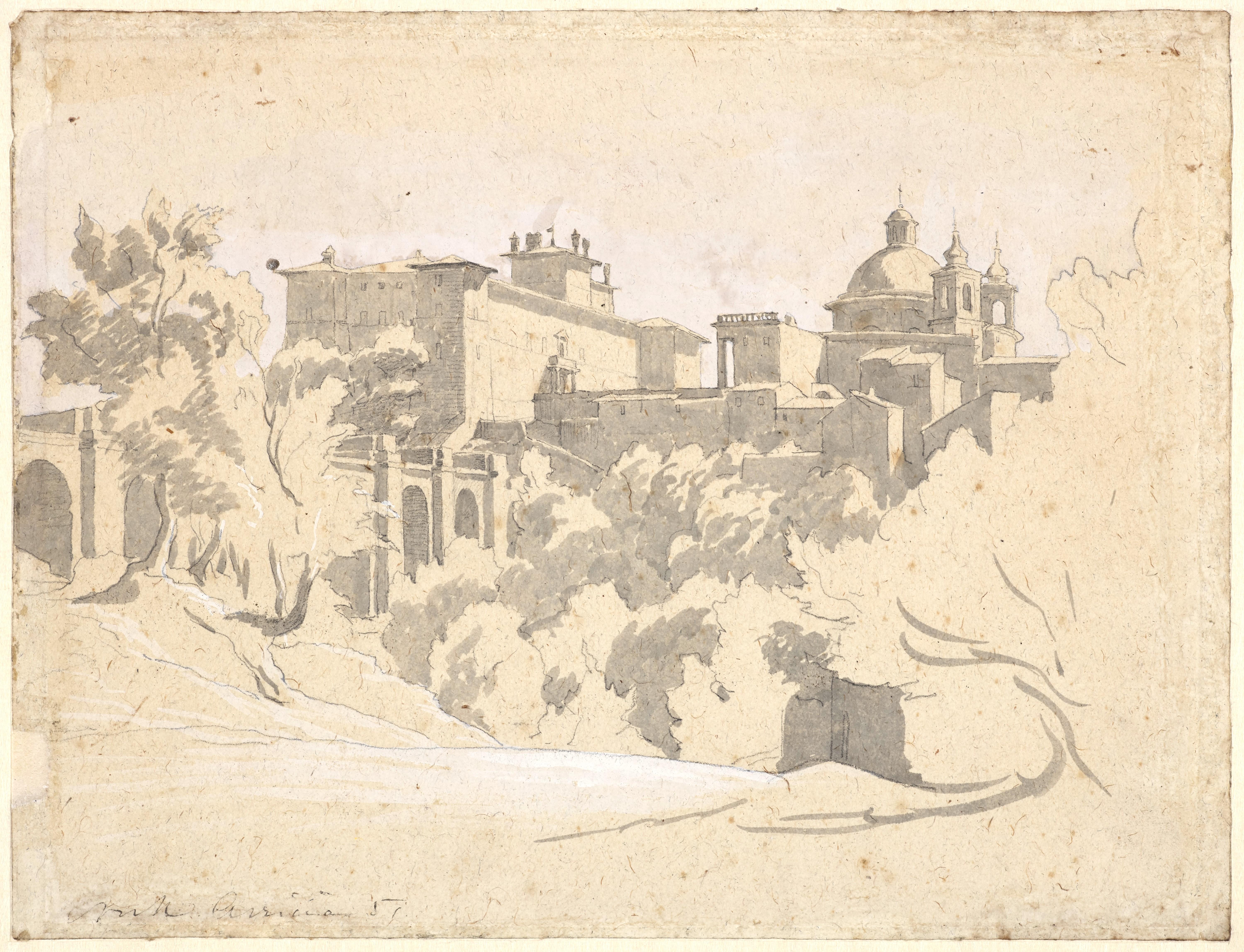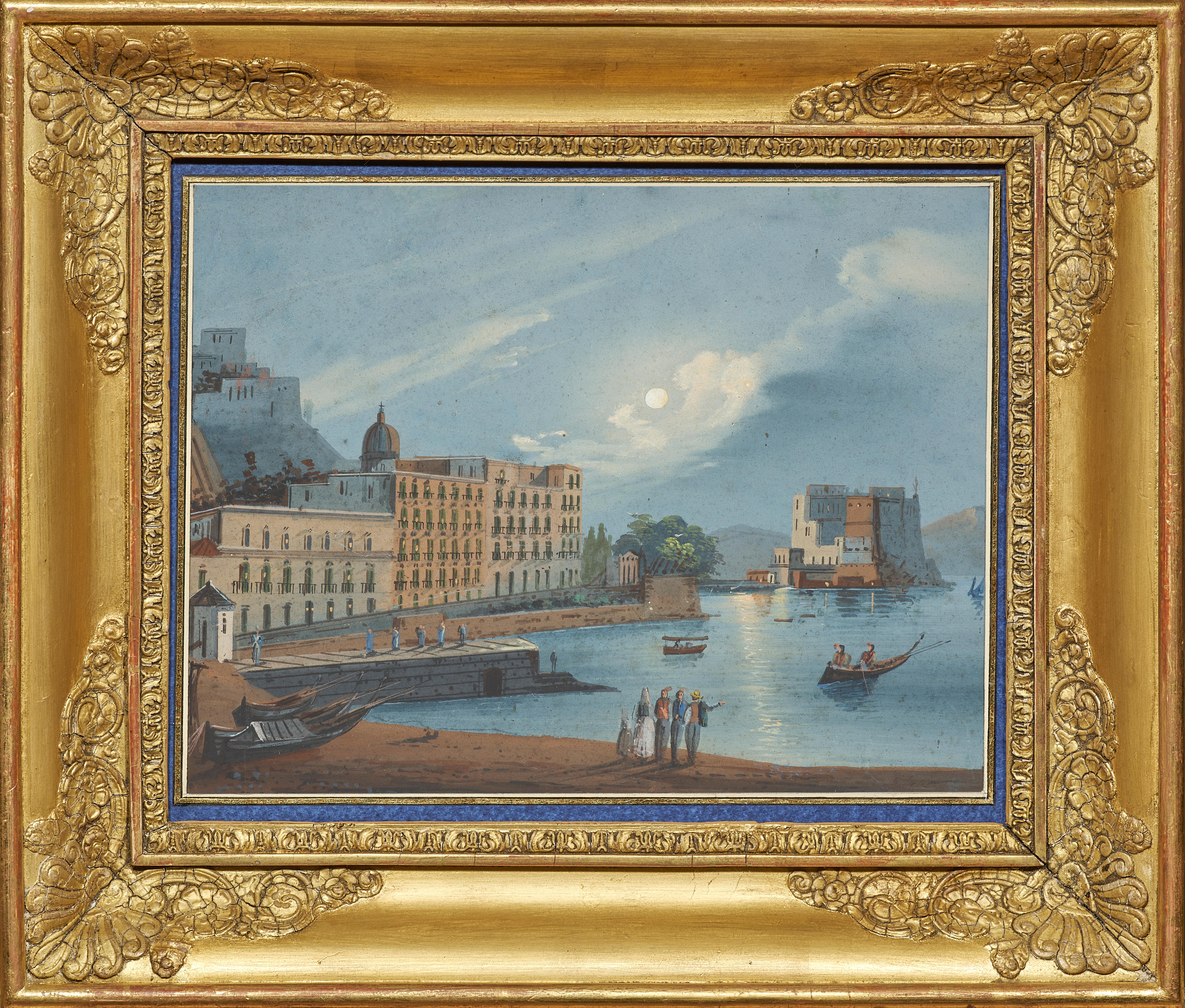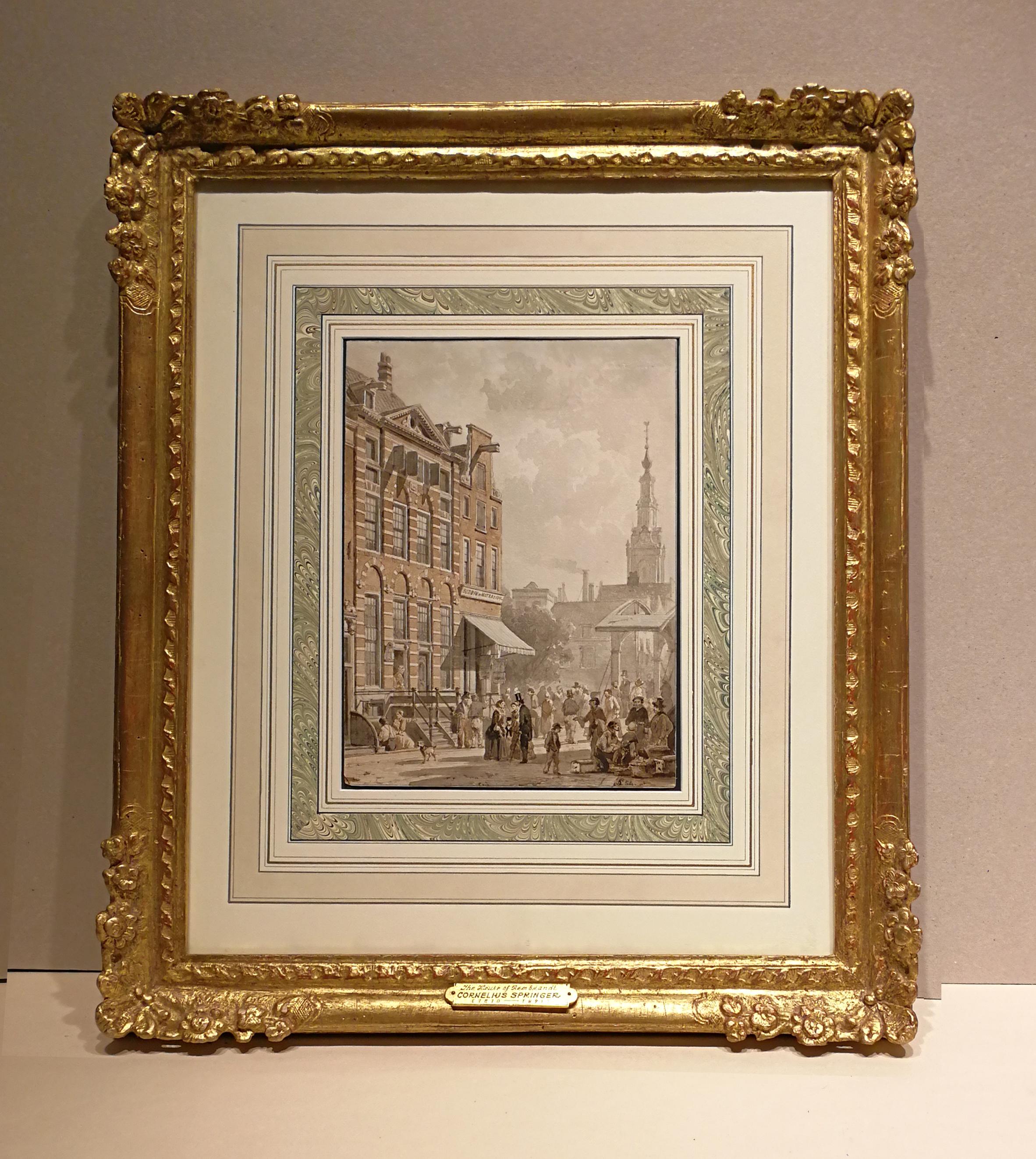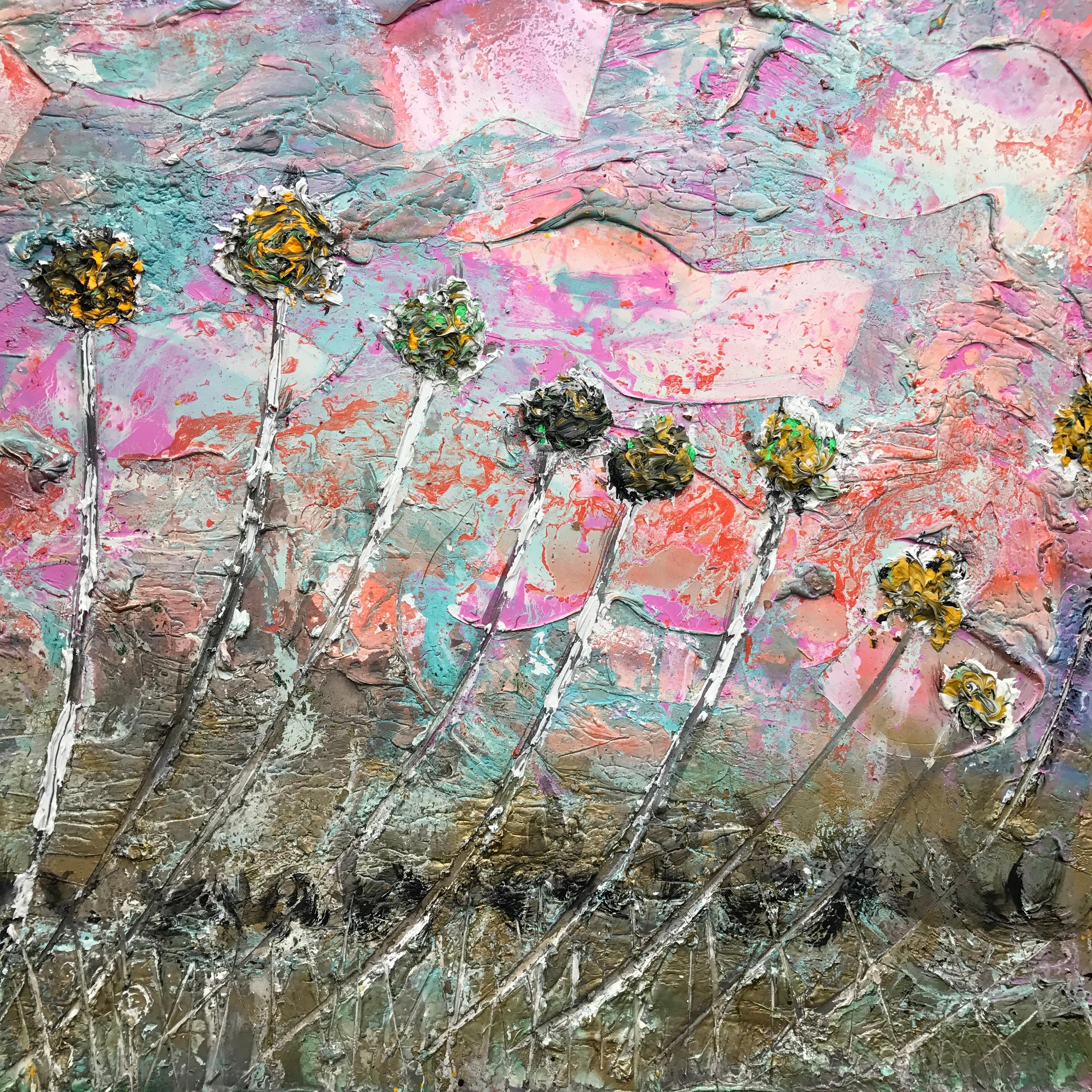Items Similar to Bramall Hall
Want more images or videos?
Request additional images or videos from the seller
1 of 9
Walter Henry SweetBramall Hall
About the Item
Walter Henry Sweet's watercolor of the interior of Bramall Hall is both delicate and romantic. His characteristic soft pinks and greens illicit the grandeur of this Cheshire manor owned by Saxons and Barons across the ages. Sweet's composition frames the window nook and seat as a place of quiet repose. The bowl of pink flowers and thick drapes add to the luxury and charm to be experienced in Bramall Hall as the light streams through its large bay windows.
A prolific British West country artist who painted street scenes, moorland views, landscapes and seascapes. Born on 11th April 1889, Walter Henry Sweet studied at Exeter School of Art under the guidance of his friend John Shapland. He worked locally and exhibited at the Devon and Exeter Annual Exhibition at the Elands Gallery in the early 1900's. At the outbreak of the First World War he joined the Devonshire Regiment and saw active service abroad. After the war he moved to Dundee and was employed by James Valentine and Sons as a commercial illustrator. He married and had two sons one of whom studied at the Dundee College of Art. Sweet died in Dundee on the 12th February 1943 aged 53. His work is characterized by the use of soft pinks and greens as well as the more dominant light brown.
- Creator:Walter Henry Sweet (1889 - 1943, British)
- Dimensions:Height: 12 in (30.48 cm)Width: 15 in (38.1 cm)Depth: 1.5 in (3.81 cm)
- Medium:
- Movement & Style:
- Period:
- Condition:
- Gallery Location:Saint Augustine, FL
- Reference Number:1stDibs: LU136329306222
About the Seller
5.0
Vetted Seller
These experienced sellers undergo a comprehensive evaluation by our team of in-house experts.
Established in 1995
1stDibs seller since 2020
16 sales on 1stDibs
Typical response time: 22 hours
- ShippingRetrieving quote...Ships From: Saint Augustine, FL
- Return PolicyThis item cannot be returned.
More From This SellerView All
- Luigi Bazzani - Port of Portus, ItalyBy Luigi BazzaniLocated in Saint Augustine, FLLuigi Bazzani’s delicate watercolor of the busy port of Portus, Rome depicts in detail, and the activities underway. The realism of the architectural details, from every step and stone to the ornate column...Category
Late 19th Century Realist Landscape Paintings
MaterialsWatercolor
- Chicken and Ducks, German Realist PaintingBy Hans-Ulrich MuhlhausenLocated in Saint Augustine, FLArtist: Hans-Ulrich Muhlhausen (Born in 1915-1987) Title: Chickens and Ducks Medium: Oil on Panel Dimensions: Framed 11” x 9”, Unframed 9” x 7” Description A small oil painting of ...Category
1940s Realist Landscape Paintings
MaterialsOil, Wood Panel
- The Pecking OrderLocated in Saint Augustine, FLHubner is a German artist born in Hermsdorf, Germany in 1943. Hubner studied commercial graphic arts in Amsterdam. He was a member of the Internal Arts Guild in Monte Carlo since 1...Category
Mid-19th Century Realist Landscape Paintings
MaterialsMasonite, Oil
- William de Shazo - Pacific SeascapeLocated in Saint Augustine, FLArtist: William Deshazo Title: Pacific Sea Scape Medium: Oil on Canvas Dimensions: Framed 28.5" x 48.5". Unframed: 39" x 19.5" Artist Bio: William D...Category
Late 20th Century American Realist Landscape Paintings
MaterialsOil
- Josef Hallberg - Sunday MorningBy Josef HallbergLocated in Saint Augustine, FLArtist: Josef Hallberg (Born in 1912 -) Title: Sunday Morning Medium: Oil on Panel Josef Hallberg’s oil painting depicts Austrian farmland as the sun is rising. The cart is pulls to...Category
Early 20th Century Realist Landscape Paintings
MaterialsMasonite, Oil
- The Harvest, Impressionist Haystack 19th CenturyLocated in Saint Augustine, FLArtist: G. Rhumont Title: The Harvest Medium: Oil on Masonite Dimensions: 6.5 x 12" unframed, 18 x 12" Framed G. Rhumont was a turn of the century German landscape artist of romantic style with realistic scenes as seen here in “The Harvest”. This bucolic scene of harvesting hay depicts two farmers working in tandem loading the horse-drawn hay wagon in a field just outside their homestead. This early autumn painting...Category
Late 19th Century Realist Landscape Paintings
MaterialsMasonite, Oil
You May Also Like
- Thomas Miles Richardson (Snr), (1784-1848). 'Swiss Lake with the Matterhorn' .Located in Frome, SomersetA fine watercolor by Thomas Miles Richardson senior, (1784-1848). A view of a Swiss lake and Alps with the Matterhorn mountain. One of the fine En...Category
Early 19th Century Romantic Landscape Paintings
MaterialsWatercolor
- View of Ariccia, a preparatory drawing by Achille Bénouville (1815 - 1891)Located in PARIS, FRThis very modern drawing presents a view of Ariccia, a small town 25 kilometres south-east of Rome. The Palazzo Chigi (in which the film-maker Luchino Visconti would film a large part of The Leopard a century later) and the adjoining church are seen from the bottom of the ravine that surrounds the town. This drawing is a moving testimony to the attraction of the city for artists of the Romantic period, who established in Ariccia a vivid artists' colony. 1. Achille Bénouville...Category
1850s Romantic Landscape Drawings and Watercolors
MaterialsInk, Gouache, Pencil
- View of the Ovo Castle in the Moonlight, a 19th century Neapolitan gouacheLocated in PARIS, FRNeapolitan gouaches appeared in the eighteenth century when tourism in the Naples area was developing: the discoveries of Herculaneum and Pompeii made this city a mandatory stop on the Grand Tour, the journey made by wealthy Europeans to complete their education. Generally small in size for ease of transport and affordable in price, these gouaches were the ideal travel souvenir that these tourists of the early days were bringing back to capture the idyllic landscapes they had discovered during their journey and to share them with family and friends upon their return at home. The Bay of Naples and the eruptions of Vesuvius are the favourite themes of these views. Here we have a view of the Ovo Castle, which was rebuilt on the island of Partenope, in the middle of the Bay of Naples and about a hundred metres from the shore by the Normans in the 12th century on antique ruins...Category
Early 19th Century Romantic Landscape Drawings and Watercolors
MaterialsGouache, Paper
- Het huis van Rembrandt van Rijn, Cornelis Springer, Watercolor/paper, RomanticLocated in OOSTERBEEK, NLNetherlands, 1817-1891 Cornelis Springer (Amsterdam, May 25, 1817 - Hilversum, February 20, 1891) was born as the fourth son of carpenter and contractor Willem Springer. Springer received training as a house painter from the house and carriage painter Andries de Wit and from his eldest brother, who was an architect, lessons in architectural drawing and perspective. After studying at the Amsterdam Academy, he painted accurately executed cityscapes with a lot of sunlight effect in Amsterdam, temporarily in Brussels and in Germany. As a member of the 'Felix Meritis' society in Amsterdam, he won a gold medal for a church interior in 1847. Together with Barend Cornelis Koekkoek...Category
19th Century Romantic Landscape Paintings
MaterialsPaper, Watercolor
- Happy is on the wayBy Matheus GoulartLocated in Palm Desert, CAMatheus is greatly influenced by the city he now calls home -- New York has long been the epicenter of fashion, hip hop, and street art, where he feels his interest in contemporary a...Category
21st Century and Contemporary Romantic Landscape Paintings
MaterialsGesso, Watercolor
- 'The Greek Temples of Paestrum' by Paul Albert Girard, Paris 1839 – 1920, FrenchLocated in Bruges, BEPaul Albert Girard Paris 1839 – 1920 French Painter 'The Greek Temples of Paestrum' Signature: Signed lower left Medium: Aquarelle Dimensions: Image size 29 x 49 cm, frame size 41 x 61cm Provenance: Paestum, designated as a UNESCO World Heritage Site, stands as the best-preserved Greek archaeological site in Italy. Situated just south of Salerno, near the picturesque Amalfi Coast, and in proximity to Pompeii, Paestum remains somewhat undiscovered by many travelers. In its prime, Poseidonia thrived, evident in the remnants of city walls, colossal temples, and the overall urban layout. As Magna Grecia expanded and established trade routes, conflicts arose between the Greek colonists and the indigenous Samnite and Lucani tribes. Archaeological findings, however, suggest a period of peaceful coexistence between the Greeks and the Lucanians. This harmony was disrupted in 273 BC with the arrival of the Romans. The Romans, while altering the city's name to Paestum, did not obliterate it. Remarkably, their admiration for the splendidly constructed temples played a role in shaping classical architecture on the Italian peninsula, influencing subsequent Roman development and style. The Romans made additions to Paestum, including a forum, an amphitheater, a temple of their own, and residential structures, some of which still stand today. In 79 BC, the eruption of Vesuvius dealt a partial blow to Paestum, altering its landscape. Despite this setback, the city's survival attests to its resilience and enduring cultural significance. Today, visitors can explore the fascinating remnants of Paestum, a testament to the confluence of Greek and Roman influences, and the architectural prowess that has withstood the test of time. Born on December 13, 1839, in the artistic heart of Paris, Paul-Albert Girard emerged as a luminary in the world of 19th-century French painting. The son of the esteemed painter Pierre Girard, he inherited not just a name but also a passion for the arts that would define his illustrious career. Biography: Born on December 13, 1839, in the artistic heart of Paris, Paul-Albert Girard emerged as a luminary in the world of 19th-century French painting. The son of the esteemed painter Pierre Girard, he inherited not just a name but also a passion for the arts that would define his illustrious career. Paul Albert was a versatile artist, displaying his mastery across various genres – from capturing the essence of everyday life in genre scenes to breathing life into captivating portraits and landscapes. His prowess extended to watercolors, mural compositions, and the rich tapestry of Orientalist paintings depicting scenes from North Africa. In 1857, Paul-Albert embarked on his formal artistic education at the prestigious École des Beaux-Arts in Paris. Under the guidance of eminent mentors such as Jean Joseph Bellel, François Edouard Picot, and Hippolyte Flandrin...Category
Late 19th Century Romantic Figurative Paintings
MaterialsWatercolor




